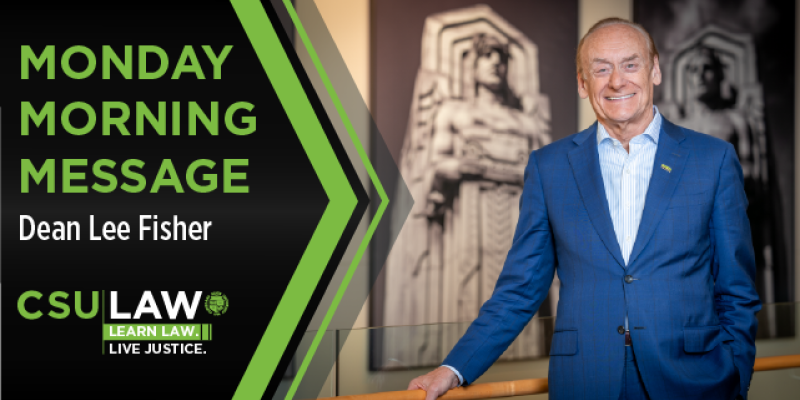
"The only title in our democracy superior to that of President is the title of citizen." -- Justice Louis D. Brandeis
We welcomed almost 7,500 new citizens in nearly 110 naturalization ceremonies throughout the country last week in conjunction with Independence Day.
But first they had to pass a citizenship test.
A person seeking to become an American citizen must pass a civics examination, covering America’s history, principles and system of government. For the test, a United States Citizenship and Immigration Services officer randomly selects a set of 10 questions from a list of 100, and reads them in English to the applicant, who must verbally answer at least six correctly. Immigrants applying for citizenship are given only two chances to pass the test. If they fail at their first interview, they must restart the application process, pay another filing fee, and retake the civics exam at another interview 60-90 days later.
So, with your American citizenship on the line, could you answer the following 5 questions from the 100 questions on the American Citizenship Test?
The questions on the Citizenship Test are open-ended, but for purposes of the below quiz developed by the New York Times, the questions have been converted to multiple-choice format. One survey found that 64% of American citizens would fail the test, even when given the questions in multiple-choice format.
1. How many amendments does the Constitution have?
- 14
- 21
- 25
- 27
2. Which statement correctly describes the “rule of law”?
- The law is what the president says it is
- The basis of democracy is law and order
- No one is above the law
- Judges can rewrite laws they disagree with
3. Under the Constitution, which of these powers does not belong to the federal government?
- Ratify amendments to the Constitution
- Print money
- Declare war
- Make treaties with foreign powers
4. The Federalist Papers supported the passage of the U.S. Constitution. Which of these men was not one of the authors?
- James Madison
- Alexander Hamilton
- John Jay
- John Adams
5. When was the Constitution written?
- 1492
- 1776
- 1787
- 1865
ANSWERS
1. 27
The 27th Amendment was ratified on May 3, 1992, but it has one of the most unusual histories of any amendment ever made to the U.S. Constitution because it was first passed by Congress in 1789; however, it wasn’t ratified by ¾ of the states as required by the Constitution. The three-quarters of the states’ consensus required by Article V of the Constitution was finally reached in 1992—more than 202 years after Congress first proposed the Amendment.
The Amendment provides that: “No law, varying the compensation for the services of the Senators and Representatives, shall take effect, until an election of representatives shall have intervened.” In 1789, James Madison proposed twelve amendments to the federal Constitution, the first ten of which were ratified in 1791 and became the federal Bill of Rights. One of the proposed amendments, which was not ratified at that time, was an amendment which forbade congressional pay increases from taking effect until there had been an intervening election of members of Congress. Madison’s reasoning was that an election had to happen before any pay raise could take effect. That way, if the public opposed an overly generous congressional pay raise, the public could throw a congressmen who voted for the pay raise out of office when they ran for re-election.
2. No one is above the law
The "rule of law" is the principle of self-governance that all people and institutions, including the government and its leaders, are subject to and accountable to law that is fairly applied and equally enforced. It embodies the precepts that no person is above the law, individuals are empowered with unalienable rights which cannot be easily taken away, and everyone should be treated equally without discrimination. As Thomas Paine wrote, “in America, the law is king…for as in absolute governments the King is law… in free countries the law ought to be king; and there ought to be no other.”
3. Ratify amendments to the U.S. Constitution
The federal government cannot amend the Constitution on its own; it can only send proposed amendments to the states to be ratified. Article V of the Constitution prescribes how an amendment can become a part of the Constitution. While there are two ways, only one has ever been used. All 27 Amendments have been ratified after two-thirds of the House and Senate approved the proposal and sent it to the states for a vote. Then, three-fourths of the states affirmed the proposed Amendment. (The other method of passing an amendment requires a Constitutional Convention to be called by two-thirds of the legislatures of the States. That Convention can propose as many amendments as it deems necessary. Those amendments must be approved by three-fourths of the states.)
4. John Adams
The Federalist Papers is a collection of 85 articles and essays written by Alexander Hamilton, James Madison, and John Jay under the pseudonym "Publius" to promote the ratification of the U.S. Constitution. John Adams did not write any of the Federalist Papers, but he was a Federalist and the only president from the Federalist party.
5. 1787
The Constitution of the United States was signed on September 17, 1787, by delegates to the Constitutional Convention in Philadelphia. At the 1787 convention, delegates devised a plan for a stronger federal government with three branches—executive, legislative and judicial—along with a system of checks and balances to ensure no single branch would have too much power.
*Interesting Historical Footnote: On this day, July 8, in 1776, a 2,000-pound copper-and-tin bell now known as the “Liberty Bell” rung out from the tower of the Pennsylvania State House (now Independence Hall) in Philadelphia, summoning citizens to the first public reading of the Declaration of Independence.
*This Week’s Monday Moment: President Ronald Reagan: Swearing-In Ceremony of New U.S. Citizens
Have a great day. Have a great week.
For copies of past messages, please go to this link: Monday Morning Messages.
Subscribe to Dean's Monday Morning Message
Subscribe to C|M|Law Newsletter
My views in all my Monday Morning Messages are my personal views alone and do not reflect the views of our law school or our university.
My best,
Lee
